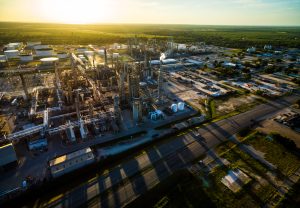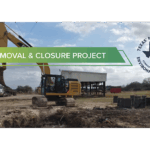
Phase 2 Environmental Site Assessments (ESA) play a crucial role in evaluating potential environmental hazards and site conditions. In Celina, these assessments are imperative to ensure the safety and sustainability of the local environment. By thoroughly examining and analyzing various factors, Phase 2 ESAs provide valuable insights into potential risks and enable effective mitigation strategies to be implemented. This article explores the significance of Phase 2 Environmental Site Assessments in Celina, the key components of the assessment process, the interpretation of assessment results, the role of environmental professionals, and the strategies for mitigating identified hazards.
Understanding Phase 2 Environmental Site Assessments
Before delving into the importance and intricacies of Phase 2 assessments, it is essential to grasp the basics. Phase 2 ESAs are comprehensive investigations conducted to determine the presence and extent of contamination in a specific location. These assessments involve a series of steps, evaluations, and analyses to thoroughly assess potential risks to both human health and the environment.
The Importance of Phase 2 Assessments
Phase 2 assessments are vital for several reasons. Firstly, they help identify potential hazards that could jeopardize human health and ecosystems. By understanding the nature and extent of contamination, appropriate measures can be taken to prevent further harm.
Moreover, these assessments are imperative for legal and regulatory compliance. Organizations and businesses must adhere to environmental regulations and standards to avoid penalties and maintain their social and environmental responsibilities.
Key Components of Phase 2 Assessments
The components of Phase 2 assessments encompass various procedures and evaluations aimed at thoroughly understanding the site and assessing potential risks. These components typically include:
- Initial Site Inspection: Environmental professionals conduct a comprehensive examination of the site, which involves visual observations, historical research, and interviews with stakeholders. This inspection provides valuable initial insights into potential contamination sources and previous land uses.
- Sampling and Analysis: Samples of soil, water, air, and other relevant materials are collected according to established protocols. These samples are then analyzed to identify the presence of hazardous substances and determine their concentration levels.
- Risk Assessment: The collected data is analyzed to assess potential risks to human health and the environment. This assessment considers factors such as exposure pathways, toxicity levels, and operational activities that could potentially exacerbate the risks.
The Process of Celina Phase 2 Environmental Site Assessments
Now that we have a foundational understanding of Phase 2 assessments, let’s explore the process involved in conducting these assessments in Celina, Texas.
Initial Site Inspection
The initial site inspection involves environmental professionals visiting the location to conduct a thorough investigation. This inspection includes a visual examination of the site, interviews with stakeholders, and historical research. By gathering this information, potential contamination sources and previous land uses can be identified, helping guide subsequent assessment activities.
Sampling and Analysis
Sampling and analysis are integral components of the process. Environmental professionals collect samples of soil, water, air, and other relevant materials from the site. These samples are then sent to accredited laboratories for analysis, where the presence of hazardous substances and their concentration levels are determined. This meticulous analysis allows for an accurate understanding of the contamination present and informs subsequent risk assessment activities.
Risk Assessment
Once the sampling and analysis phase is complete, the data collected is thoroughly evaluated to assess the potential risks associated with the site. Environmental professionals consider factors such as exposure pathways, toxicity levels, and operational activities that could amplify the risks. By conducting a comprehensive risk assessment, the true extent of potential harm can be determined.
Interpreting the Results of Phase 2 Assessments
Interpreting the results of Phase 2 assessments is essential to gain a comprehensive understanding of potential hazards and site conditions. The interpretation involves analyzing the collected data and using it to make informed decisions.
Identifying Potential Hazards
Through careful examination of the assessment results, potential hazards can be identified. These hazards may include the presence of harmful chemicals, contaminants, or other substances that could adversely affect human health and the ecosystem. By identifying these hazards, appropriate measures can be taken to mitigate and manage the risks.
Evaluating Site Conditions
Besides hazard identification, Phase 2 assessments help evaluate the overall conditions of the site. This evaluation involves considering factors such as soil quality, groundwater contamination, and potential threats to nearby water bodies. By understanding the existing conditions, measures can be implemented to maintain and enhance the safety and sustainability of the site.
The Role of Environmental Professionals in Phase 2 Assessments
Environmental professionals play a pivotal role in conducting Phase 2 assessments effectively. Their expertise and knowledge ensure that accurate data is collected, analyzed, and interpreted, leading to informed decision-making and appropriate mitigation strategies. Their involvement throughout the assessment process is crucial for successful outcomes.
Expertise Required for Phase 2 Assessments
Phase 2 assessments require a diverse range of expertise. Environmental professionals involved in these assessments possess knowledge in areas such as geology, chemistry, risk assessment, and environmental regulations. This multidisciplinary approach enables a comprehensive understanding of potential hazards and effective strategies for risk mitigation.
Responsibilities of Environmental Professionals
Environmental professionals are entrusted with several responsibilities during Phase 2 assessments. These responsibilities include accurately conducting initial site inspections, ensuring proper sampling and analysis procedures, conducting comprehensive risk assessments, and effectively communicating the assessment results to stakeholders. Their expertise and diligence are vital in ensuring reliable and actionable assessments.
Mitigation Strategies Following Phase 2 Assessments
After the comprehensive Phase 2 assessment has been conducted and the results have been interpreted, appropriate mitigation strategies can be implemented to effectively address identified hazards. These strategies aim to prevent harm to human health, the environment, and future site users.
Remediation Options
Depending on the nature and extent of contamination, various remediation options can be considered. These options may include soil or groundwater treatment, excavation and removal of contaminated materials, or long-term monitoring and containment strategies. The selection of the most suitable and effective remediation option is determined by the assessment results and expert recommendations.
Preventive Measures for Future Protection
Once the immediate risks are mitigated, preventive measures can be implemented to ensure ongoing site protection. These measures may include regular monitoring of site conditions, implementing strict contamination prevention practices, and establishing protocols for future assessments. By proactively addressing potential risks, the long-term environmental sustainability and safety of the site can be safeguarded.
In conclusion, Phase 2 Environmental Site Assessments are vital for understanding potential hazards, conducting thorough risk assessments, and implementing effective mitigation strategies. In Celina, these assessments play a crucial role in ensuring the safety and sustainability of the local environment. By thoroughly evaluating site conditions and identifying potential hazards, environmental professionals contribute to the preservation of the ecosystem and the well-being of the community. Through the diligent implementation of remediation and preventive measures, risks can be effectively managed, paving the way for a safer and more sustainable future.
If you’re seeking expert guidance and comprehensive support for your Phase 2 Environmental Site Assessments in Celina, look no further than ESE Partners. Our team of skilled environmental engineers and scientists is dedicated to responsibly moving your business forward while addressing complex environmental challenges. With a commitment to delivering opportunity and enhancing community quality of life, ESE Partners offers innovative, sustainable solutions tailored to your unique needs. Don’t let environmental concerns hold you back. Request A Proposal today and partner with us for a safer, more sustainable future.








